In the early 70s, an alienated and alienating attitude toward viewers characterized the main orientations of avant-garde art [1]. The art of the time tended to be transient or, alternatively, inaccessible to the public at large: temporary installations, ideas as art, masochistic gestures as art, and earth works executed in distant deserts. The aesthetic experience became something esoteric, which served the artists in sharpening and reflecting their self-consciousness. Cindy Sherman – then a student in the art department at the State College University of New York in Buffalo – became acquainted with the leading currents in the art of the time, such as post-minimalism and conceptualism. But from the outset the communicative qualities of her work placed her in a different world to that of the avant-garde of those days. Sherman and other young artists did not reject conceptualism, but found their own artistic direction by according a new value to their images and exploiting them as raw material. They devoted special attention to the way any image at all, simply by being presented, activates a unique charge which is neither objective nor subjective, which does not distinguish between signifier and signified, but is a non-hierarchic hybrid of both – a mixture of represented content.
In those years, while photographers focused primarily on the streamlining of photographic processes and on the manipulation of materials, artists from other disciplines began mobilizing the camera for new purposes: documentation of performances, body art, temporary installations, outdoor sculpture and earth work projects. At times the photograph was the only lasting documentation of those activities, and became identified in its very essence with anti-object art. At any rate, through these practices, photography became part of the mainstream of the art world.
Cindy Sherman and other artists of her generation – such as Richard Prince, Barbara Kruger, and Sherrie Levine – shifted the formal axis of the history of photography while rejecting its most revered conventions: the sanctity of the photographic paper, the camera, the right exposure and the perfect print.
For Sherman, the camera is an instrument by means of which she examines the question of representation, and exposes to renewed discussion the myth, which affirms that photography reflects reality. She confronts the real with the simulated and blurs the distinction between them by means of a protracted practice of simulation. In her works, Sherman integrates references to the various communications media – film, television and advertising – and to the world of art and its history. Each one of her series is as it were viewed through the eyes of a different medium, with the boundaries between them alternately outlined and undermined.
The motif, which characterized her work until the late ‘80s was the repetition of the same feminine figures in various identities, the “model” for this “theatre of guises” always being the artist herself. By constructing changing narratives she created a “multiple self,” and in this way fictionalized not only the representation of the “self” but also the real “self.”
In her first series – Untitled Film Stills, 1977-1980 – Sherman embodies characters of women from movie scenes, who look as though they have been taken from familiar movies from the ‘40s and ‘50s. In some of them she appears in the role of a girl in passive anticipation of an event about to happen (in scenes derived from B-movies), and in some, in the role of a film star. The simulation is emphasized here through the presentation of an actress embodying a role. There are those who see the references to the world of advertising and cinema as an implied criticism of the way women are represented by the media, generally through men’s eyes.
Actually, the pictures were not based directly on particular movies, but were only influenced by them. In an interview, Sherman said that the picture should stimulate memory and arouse the sensation that we have already seen it (the picture and not the particular cinematic event) [2].
In 1980 Sherman started on a new series in color. The series shows scenes from the world of television and advertising, depicting women in dramatic situations and extreme psychological states. By means of backscreen projections, the spaces of the occurrences in these pictures are duplicated, thus emphasizing the unreal element. The voyeuristic-sensual syndrome, evoked in her Film Stills by the artist’s appearance in the photograph while delegating the photographer’s role to others, is undermined in this series. Sherman completely collapses the narrative space and the intimate space, which existed in Film Stills – the spaces that support voyeurism. The backscreen projections have no thematic direction, and their changeable symbolism makes the entire exhibit more illusory than the previous series. The character embodying a role is concerned with introspection, with thinking about something. The thing itself takes on only secondary importance. Since thoughts are unphotographable, what is photographed is the face absorbed in thought, channeling its consciousness outwards, towards invisible depths.
The horror that is reflected in some of the Film Stills disappears with the use of the projected backscreen. The space surrounding the figure fills with a psychological storm and there is still a strong sense of anticipation, taken to the extreme state of despair. The helplessness of women, and their dependence on men who are supposed to redeem them from their desireless and boring isolation, connects here with the manner of presentation of women in Pop Art. In Roy Lichtenstein’s comic paintings there appear women who are beautiful, ridiculous and helpless, and the texts that emerge from their mouths generally express a desperate appeal to a man, a plea for help. True, in Sherman’s work too the figures are stereotypes, but they present ordinary women and not symbols of beauty, sex, or bourgeois status.
In these series, Cindy Sherman examines the boundaries of imposture. She points to the possibility that gives an existence to people and objects by virtue of their unlimited capacity to change. She does not simulate authenticity, nor play at faking, but presents woman, or the subject, as a sequence of self-deceptions. The very consistency and endlessness of this self-deception turn it into the highest form of truth.
The fact that these pictures are Untitled (bearing serial numbers only), denies them any particular identification or definition of belonging. The disguise, like the figure, refrains from identifying itself. The “problem of identity” of the simulated and of the authentic is the same problem, and hence, the value distinction between them is lacking too. The only defined identification is the constant metamorphosis of the “self.”
In contrast to classical thought, which created an ideal model by a method of reduction – by combining selected details and omitting other, censurable, details – Cindy Sherman builds a model of femininity by means of expansion and inclusion. The feminine stereotype, in her work, is built from the sum total of images, without selection and without privileging particular details.
In the phase between the protracted and extensive treatment of personal, social, and feminine stereotypes and the transition to classical models from the history of art, Sherman turned (in the years 1985-1987) to an in-depth investigation of the stereotyped image. She entered the world of disease and death, where the boundaries and laws of identity are erased and “other parts” are exposed. Of the variety of earlier images, there remained only hints of a humiliated and wounded figure. In most of the cases, this figure is revealed through reflections of remnants of its presence: a pair of tormented eyes reflected in a small mirror, in a piece of broken glass, or in the lens of discarded glasses. The objects in the background – shreds of hair, make-up and bits of games – are scattered among the ruins like fragments of further evidence of a story of horror. Gradually the “shell” of the figure diminishes, almost vanishes, and a surrealistic connection is created between the atmosphere of destruction and the colorful fantasy, like the emptied suit, bathed in the warm radiance of a television screen. The image itself no longer depicts variations of play or psychological states, but disintegrates, contracts, and aspires to reach the status of a code.
To the series of historical portraits, Sherman brings some of the items and accessories that appeared in the earlier series, but focuses mainly on plastic artificial limbs. She lays these, with emphasis on the artificial connection, upon the body of the model, i.e. upon her own body. She stages and photographs “ masterpiece portraits” from the art world, framed in the “National Gallery style,” treated in a uniform way and presenting the same aura of importance. In some of these photographs one can identify with certainty the original according to which the portraits were staged (Untitled, 1989 [#216] – Fouquet, Maddona of Melun, c.1950; Untitled, 1989 [#205} – Raphael, La Fornarina, c. 1516; Untitled, 1990 [#229] – Caravaggio, Bacchus, c. 1590), even though in these too visible changes have been made. In others one can see clear or assumed influences of, or affinities of one kind or another with, famous painters and paintings. One may define this series as “memories from the history of art” or, more precisely – as a poor memory of a painting with regard to the painting itself. The series emphasizes the distorting power of memory and relates, beyond the process of “ memorization,” to the more complex concept, memory. Sherman plays with the works of the great artists like someone who tries to discover forgotten things and turns automatically to interpreting the things he does remember instead. Her variation on La Fornarina, like a dream about Raphael’s painting, presents the original arrangement in a distorted and re-organized manner. She shows us what we remember instead of the original and perhaps also reveals a little of the artist’s undeclared intentions. Each image in the series is composed of disharmonic parts, in a forceful and unstable combination that arouses a discussion of faking, idealization, and the connection between them. The body is presented in two forms: ideal and grotesque, which also addresses the normal, present in the disparity between the ideal and the grotesque. The more beautified and idealized the classical portraits are, the greater becomes the distance between the ideal and the actual body. Sherman stretches this disparity, exaggerates it, and places the figures inside it. She presents an absurd process, which squeezes an ideal image out of the body, but at the same time denies it the capacity to bear it. Every step in the direction of change and beautification is also a step in the direction of the grotesque. The extensive use of artificial limbs – breast, stomach, innards – and of fake clothes, creates, in the end, a fake Raphael. The artist’s appropriation of the model’s anatomy and the distortion he sometimes presents in the feminize anatomy are sharpened in Sherman’s work by extreme exaggerations of the beautified details and by the substitution of artificial items for them.
The skilled play of imitation raises the problem of fakes in art. Sherman confronts the original with the process of imitating it (the means for which are emphasized and openly brandished) and with the photograph. The photograph is the outcome of this process, but also has an existence of its own and, absurdly, is the only item that is innocent of faking.
As in the earlier series, here too the staging is successful, but does not pretend to blur the illusion. On the contrary – it aims to foreground the affinity (but not an identity) with the original. The simulation is meticulously staged, radiating an aura of “authenticity,” which arouses us to seek the historical model, but is guided, consciously and declaredly, by a skilled craft of deception.
In her latest series of works, Sherman takes herself out of the picture and puts dolls there instead. The dolls look like a hybrid of sex dolls, display window manikins, and plastic body parts from medical supply vendors. These are sometimes photographed from close up and enlarged, and only a few clues confirm that they are not real flesh and blood. Sherman gives the dolls a “human” treatment, which, through blatant sex postures, emphasizes a sub-human, bestial level. At the same time, she continues here her treatment of the modes of representation of women and recently (in the historical portraits) also of men. To the dolls she sometimes adds artificial limbs, masks, rubber body parts, and composes a new “post-human” creature. This creature sometimes looks limbless or sexless, despite the surfeit of details, or perhaps precisely because of it. The distancing of the human factor allows for a penetration of grotesque humor into the pictures. The objects, the decomposition and recomposition of which makes them difficult to identify, are placed in sex postures or states of auto-eroticism. For example, in Untitled, 1992 (#253), the head between the legs presents a grotesque model of auto-sexuality – a contemporary parallel to “safe sex” – or perhaps mutual sex, which decomposes the body and proposes a better alternative for its reorganization.
Sherman imposes exaggerated and degrading sex postures upon plastic dolls, which are therefore perceived as suffering, as experiencing physical pain, and arousing human sympathy. This accords the dolls a kind of fleshy reality, thus constraining an unexpected relating to the violence they have been exposed to, and even arouses an embarrassing questioning – in the present era, are dolls substitutes for people, vice versa? Sherman emphasizes the seduction and attraction that exist in violence, in degradation, in dehumanization, which are central to the pornographic impulse, and presents the dark side of human nature as a part of humanity in general.She makes a sharp transition from treatment of the materials of high art (historical portraits) to treatment of the lowest levels of human behavior. Although she does not imprint a moral judgment on her images, her treatment of sex, dolls, and humiliation deals with the passions of the flesh, the exclusive possession of mankind, and leads to the discussion of sin and of punishment.Cindy Sherman, who was always the model in her works, has gradually moved out of the picture. Her simulated, polished and made-up identity was smashed into fragments, into clues and reflections of human presence. Later she covered herself with masks and various items, and finally she has abandoned the frame and replaced her own figure with manikins exposed in blatantly sexual scenes.
The gaze and the sexuality have undergone a process of gradual change, although in apposed directions, through all the phases of her work. Even though in the earlier series no nudity appeared at all, sensuality and an element of seductiveness clearly radiated from them. The decomposition of the bodies and the addition of the artificial limbs gradually diminished the sexuality, and in the blatant sex scenes of the dolls it has almost no presence at all. On the other hand, the woman who embodied a role in the earlier series always averted her gaze from the camera and directed it towards an external stimulus. The gaze moves gradually towards the camera (and the viewer), through reflection, through the eye-coverings, and from the faces of the historical models. In the later work the gaze (which is no longer that of the artist or the model) turns directly towards the camera, meets the gaze of the viewer and demands his relating.
By means of a multiplicity of identities, pretenses, and disguises, Cindy Sherman breaks the sanctified myth of the artist as creator/inventor, and raises doubts about the question of originality. Her concentration on simple forms, almost stereotypes, of representation, her borrowings from both popular and high culture, and her decomposition of her own identity into series of personae, allow Sherman to investigate our conceptions about the meaning of originality in art and about the necessity of the tradition of fine art. She rejects the presentation of the artist as an original, subjective storehouse of consciousness, different from the ordinary world of phenomena, and in terms of photography, pushes aside the investigation of formal syntax and elevates questions of content.
One of the central tensions in Sherman’s work stems from the confrontation between her stylized treatment of popular images and the presentation of her immediate personal appearance. Here a hint is embodied of the difficulties and questionings involved in creation, the difficulty involved in the inclusion of meanings inside the world of contemporary images, which locates her work in postmodernism.
Many interpretive orientations have attempted to classify Sherman’s work, and the postmodernist interpretation is only one of these. Feminists have identified her work – which related to the specificity and distinctiveness of connections between mass culture and femininity – with their own struggle, and have seen it as a product of feminist theories. Other critics have presented a synthesis of both approaches: on the one hand, aspects of femininity as feminism, and on the other hand – art that deals with postmodern issues, with the epistemological status of photography and with its dialects. There are also critics, such as Andy Grundberg and Lisa Phillips, for example, who describe Sherman as an artist innocent of considerations of aesthetic or sexual politics. Opposed to them, there are those who see this criticism as giving legitimization to the repression of feminism as a critical term, in favor of an old-new term – universal art, which transcends the characterizations of femininity and relates to human states outside the context of gender differences. Interpretations of this kind relate the visions of the hypnotized women to sensations, fantasies and anxieties originating in human existence as such and not necessarily in feminine existence. To reinforce this position one could cite the historical portraits, which attempt to expose the masculine pretenses (or present masculinity as pretense). Indeed, this attempt breaks the succession of the works, which constituted a “theater of femininity” that has been shaped and nourished by mass culture.
The artist herself consistently refrains from giving her works explicit meanings of the kind attributed to them by the various kinds of criticism. She sees this criticism as a by-product of her work, and although she does not reject any of it entirely, she refrains from seeing it as a motivation for her work. Or, as she herself puts it: “My work does not proceed theoretically” [3]. | | | | Notes | | | 1. The introductory paragraphs of this essay are indebted to the Introduction by Peter Schjeldahl and Lisa Phillips (eds.) in Cindy Sherman(exh.cat). Whitney Museum of American Art, New York, 1987.
2. The interview appeared in American Photographer in September 1983, see p. 77.
3. From an interview with Carolyn Christou-Bakargiev, in Flash Art Italia, Summer 1988,
p. 188.
| | |
| | | | 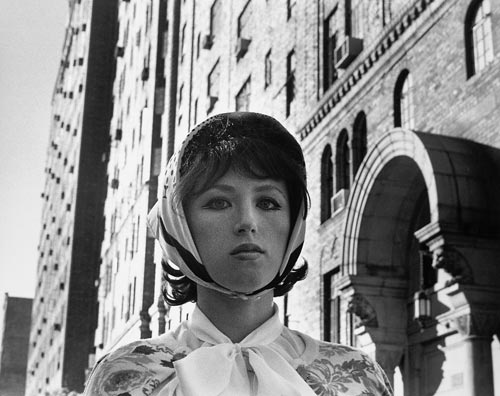 | | Cindy Sherman, Untitled Film Still (#17), 1978, black and white photograph, Courtesy of the Artist and Metro Pictures
| | | 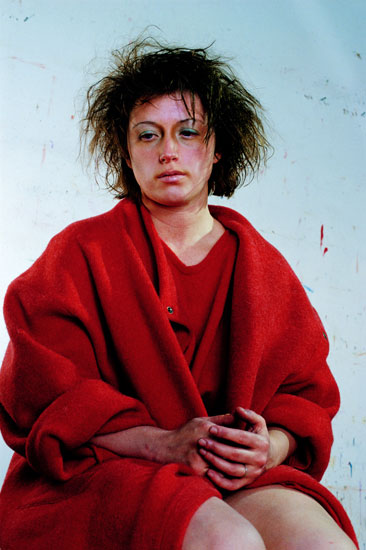 | | Cindy Sherman, Untitled (#137), 1984, color photograph,Courtesy of the artist and Metro Pictures | | | 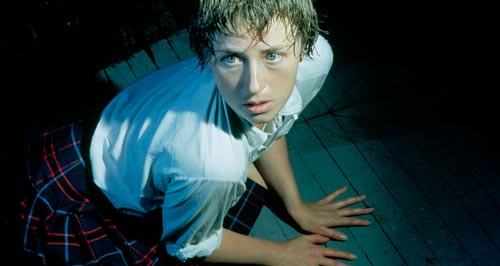 | | Cindy Sherman, Untitled (#92), 1981, color photograph, Courtesy of the artist and Metro Pictures | | | 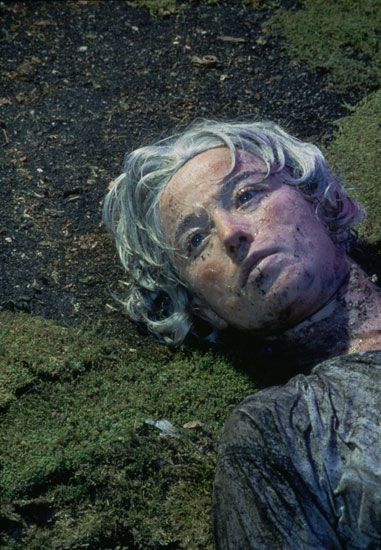 | | Cindy Sherman, Untitled (#153) , 1985, color photograph, Courtesy of the artist and Metro Pictures | | | 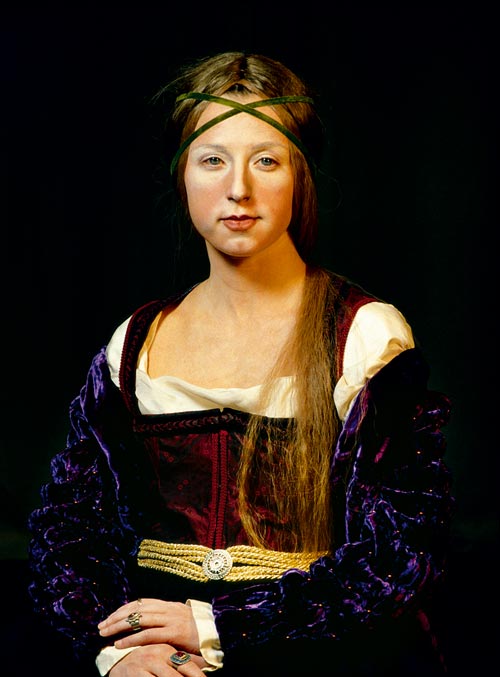 | | Cindy Sherman, Untitled (#209), 1989, color photograph, Courtesy of the artist and Metro Pictures
| | | 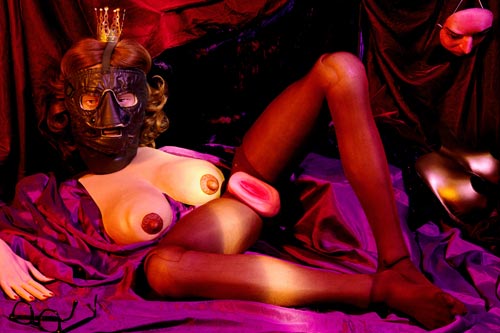 | | Cindy Sherman, Untitled (#264), 1992, color photograph, Courtesy of the artist and Metro Pictures
| | |
|